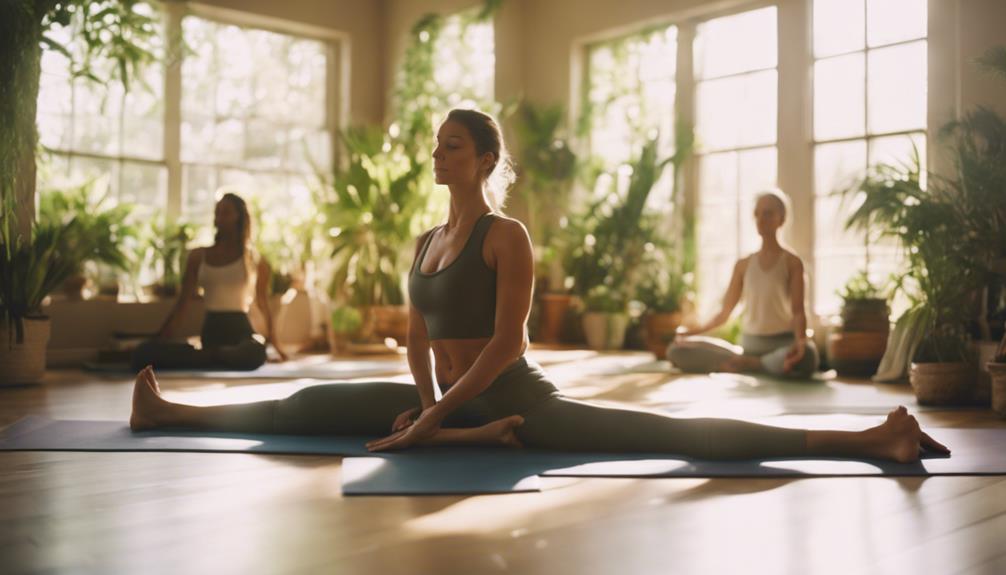What Is The Best Thickness For Yoga Mats

Yoga mats are essential tools for practitioners of all levels, providing comfort, support, and stability during practice. However, one of the most frequently asked questions among yoga enthusiasts is, “What is the best thickness for yoga mats?” In this detailed blog post, we will explore the various thickness options available, their benefits, and how to choose the perfect mat for your needs.
The Importance of Yoga Mat Thickness
Understanding the significance of yoga mat thickness is crucial for enhancing your practice. The thickness of a yoga mat affects your comfort, stability, and overall experience during yoga sessions. A mat that is too thin may offer insufficient cushioning, leading to discomfort during poses, while a mat that is too thick can hinder stability and balance. Therefore, finding the right thickness is vital for both beginners and seasoned practitioners alike.
Standard Thickness Options for Yoga Mats
Yoga mats typically come in several thickness options, with the most common being 1/16″, 1/8″, 1/4″, and even thicker models. The standard thickness for most yoga mats is 1/8″ (approximately 3mm). This thickness strikes a balance between cushioning and stability, making it suitable for various yoga styles, from Hatha to Vinyasa. However, thicker mats, such as 1/4″ (approximately 6mm), offer additional support, which can be beneficial for those with joint issues or those practicing more restorative styles of yoga.
Benefits of Thicker Yoga Mats
Thicker yoga mats are particularly advantageous for specific practices. If you’re someone who enjoys restorative yoga or has sensitive joints, opting for a thicker mat can provide the extra cushioning you need to feel comfortable and supported. Mats that are 1/4″ or thicker help alleviate pressure on the knees, hips, and spine, making them ideal for practitioners who may experience discomfort on thinner surfaces. Moreover, thicker mats can also provide added insulation from cold floors, which can enhance your overall experience, especially during longer sessions.
Related Posts:
Benefits of Thinner Yoga Mats
On the other hand, thinner yoga mats (1/16″ and 1/8″) have their own set of advantages. These mats allow for better balance and stability, which is crucial for dynamic practices like Ashtanga or Power Yoga. With less cushioning, you can maintain a stronger connection to the ground, facilitating better alignment and control in your poses. Additionally, thinner mats are often more portable and lightweight, making them an excellent choice for yogis who frequently travel or attend classes outside of their home.
Choosing the Right Thickness for Your Yoga Style
When determining the best thickness for your yoga mat, it’s essential to consider the style of yoga you practice. For example, if you primarily engage in restorative or Yin yoga, a thicker mat may enhance your comfort and enjoyment. In contrast, if you prefer more vigorous styles like Bikram or hot yoga, a thinner mat may help you maintain stability and balance. Ultimately, understanding your yoga practice’s demands will guide you in selecting the most appropriate thickness for your mat.
Personal Considerations: Weight and Height
Individual factors such as your weight and height can also influence the ideal thickness for your yoga mat. Heavier individuals may benefit from thicker mats that provide adequate cushioning and support, while lighter practitioners might feel comfortable on a standard thickness mat. Similarly, taller individuals may prefer a thicker mat to accommodate their longer limbs and provide enhanced support during standing poses. Taking your personal physical attributes into account will help you make a more informed decision when choosing the best thickness for your yoga mat.
Material and Texture: Impact on Thickness Preferences
The material and texture of a yoga mat can also impact your preference for thickness. Most mats are made from materials like PVC, TPE, or natural rubber, each offering different levels of grip and cushioning. For instance, a thicker natural rubber mat may provide excellent grip while still offering ample cushioning. Conversely, a thinner PVC mat might be easier to clean and transport but may not provide the same level of comfort. When considering thickness, be sure also to evaluate the material and texture to ensure you find a mat that meets all your needs.
Conclusion: Finding Your Perfect Yoga Mat Thickness
In conclusion, the question of “What is the best thickness for yoga mats?” does not have a one-size-fits-all answer. The ideal thickness will vary based on your personal preferences, yoga style, and individual needs. Thicker mats offer more cushioning and support, making them suitable for restorative practices, while thinner mats promote stability and balance for dynamic styles. By considering your yoga habits, physical characteristics, and material preferences, you can select the perfect mat that enhances your practice and provides the comfort and support you need. Remember, the right yoga mat can significantly improve your experience and help you achieve your yoga goals. Happy practicing!How Much Do Yoga Instructors Make A YearVeda YogaIs Yoga Not Christian